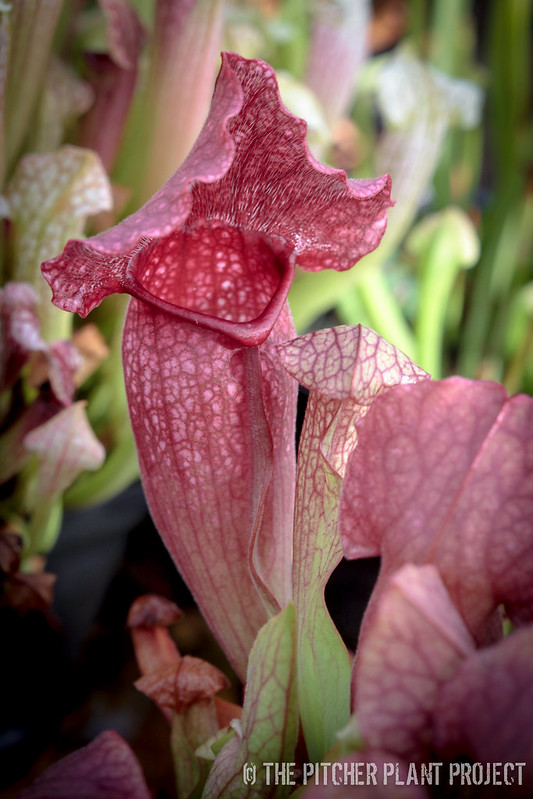Ever since this article on glowing carnivorous plants was written, I’ve always wanted to try photographing the plants under UV light. I’ve tried various types of black lights, but most of those lights didn’t really produce that visible glowing reaction that I was looking for in the plants. Turns out I needed a short wave UV light. Scroll down a bit in this wiki to see what I’m talking about when I talk UV wavelength in nanometers, or “nm” for short.
At first I tried out a black light LED flashlight, as well as a common fluorescent black lights bulb; both of which I found at my local hardware store. Those mostly bathed the plant in this purple ambient light and did not create the visible glow I was looking for. I would guess that those lights were emitting in the 380-390 nm range. Next I bought a light off eBay that said it was 365 nm. Ehhh… that was a little better than the previous lights that I had, but didn’t quite have that glowing “oomph.” After doing more research and digging, I ran across this post on the International Carnivorous Plant Society forum and from there I started looking for a 254 nm UV lamp of sorts. I found one that was relatively inexpensive in comparison to some of the other laboratory grade UV lights out there. ($50 vs. $300+ lights.)
I took two photos of each of the photographed plants below. One under regular light and the other under 254 nm UV light, both of which you can see below. Mouse over the photographs below to see the photo in regular light. And yes, I also noticed that some Nepenthes were “brighter” than the others under this light. (By the way, check out my Vine video. The Vine link might not work in Firefox, but you can view in Chrome and IE browsers…)
I haven’t had much time at night to work with the Sarracenia just yet, but from what I’ve noticed there hasn’t been much fluorescence that is visible to the human eye with this particular lamp that I have. I’ll try to get some photos next time with the Sarracenia.
Photos below are 20 – 25 second exposures of the plants under the 254nm uv light. Mouse over the images to see the plant in regular light.

Nepenthes “Benevolence”

Nepenthes ventricosa x tiveyi

Nepenthes “Song of Melancholy”

Nepenthes “Enigma”

Nepenthes “Troth”
***
Special thanks to Paul Barden and Kinjie Coe for being my “mentors” in Nepenthes growing! Thank you both so much for your patience and generosity … y’all got me HOOKED!














